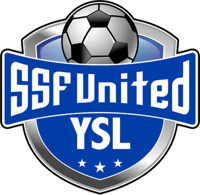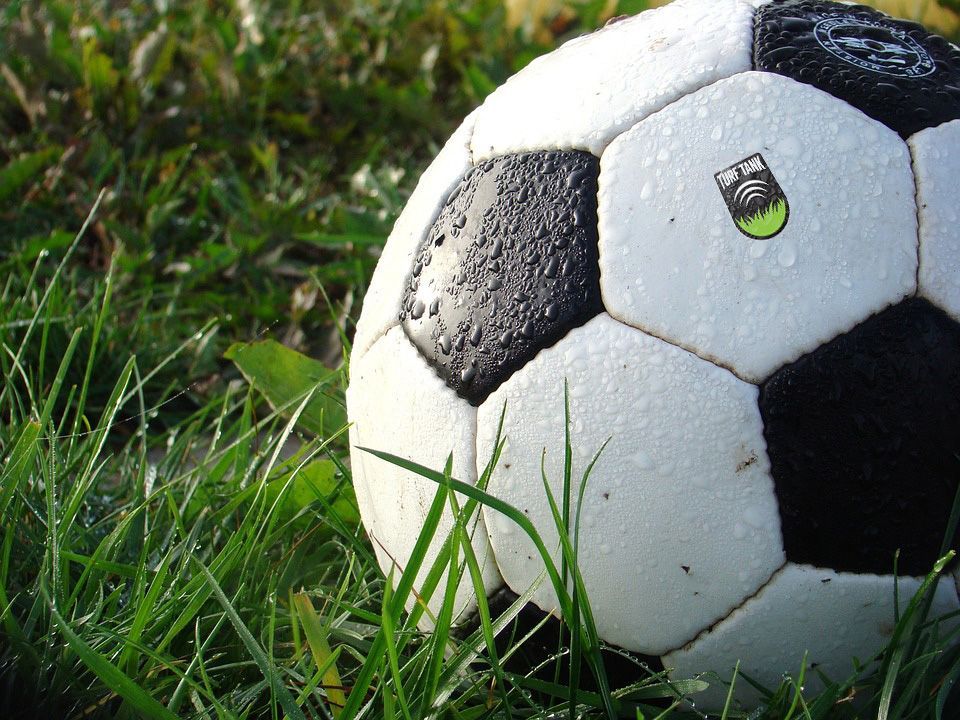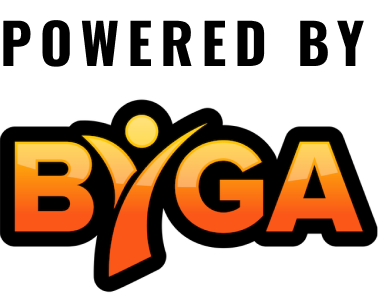IMPORTANT INFORMATION FOR PARENTS

About SSFUYSL
South San Francisco United Youth Soccer League (SSF United) was created to provide a full range of soccer services to the youth of South San Francisco and surrounding areas. Our CoEd Fall and Spring Recreational and Competitive soccer program (ages 4 to 18 years) are eight to ten weeks long with games on Saturdays and/or Sundays. The goal is to provide players of all skills and abilities the opportunity to learn the game of soccer. We are grateful to be a co-sponsored group of the South San Francisco Park & Recreation.
MISSION STATEMENT
South San Francisco United Youth Soccer League (SSFUYSL) is a non-profit organization with a 501(c)(3) status that strives to make the game of soccer fun, affordable, and accessible to all children in South San Francisco and its surrounding communities.
WE BELIEVE that every child should have the opportunity to participate in recreational and competitive soccer in a safe, fun, and rewarding environment, no matter their socio-economic background.
WE BELIEVE soccer can help our youth develop life-long skills both on and off the field by keeping them active, building their self-esteem, teaching them responsibility, and developing a sense of team and community.
WE BELIEVE THAT THE GAME IS FOR THE KIDS.

REFUND POLICY
Full Refunds:
Refunds, minus a $30 processing fee will be issued in full for registrations canceled up to 7 days after registration closes for the upcoming season.
A full refund will be issued if a player withdraws from the league due to a documented medical reason prior to the start of the season. A doctor’s note will be required.
No Refunds:
No refunds will be issued after 7 days following the close of registration for the season or once the season begins.
There will be no full or partial refunds for players who miss games or practices due to weather illness, injury, vacation, or any other reasons.
Important Notes:
All refund requests must be submitted in writing to ssfsoccer1@gmail.com.
Refunds will be processed within 14 business days of receipt of board approval the refund request.
Refunds will be issued in the same form of payment as the original payment.
Please note that due to the nature of team formation in youth soccer, player withdrawal after the close of registration significantly impacts the balance and fairness of the league. Teams are carefully constructed to ensure equitable competition. Removing a player necessitates adjustments to multiple teams, causing administrative burdens and disrupting the overall league structure.
By registering for the league, you acknowledge and agree to this refund policy.
-SSFUYSL reserves the right to make exceptions to this policy at its sole discretion.
-SSFUYSL is not responsible for any fees charged by payment processors or financial institutions.
-SSFUYSL strongly encourages players to c-commit to the full season to ensure a positive and enjoyable experience for all participants.

FOR COACHES, PLAYERS, AND SPECTATORS
The South San Francisco United Youth Soccer League has zero tolerance policy for poor sportsmanship and conduct by players, coaches and game spectators. We do not allow anyone to publicly question referee calls or make negative comments to referees, players, coaches or other spectators. We also do not tolerate physical aggression, falsifying league documents, or profanity and alcohol use at the playing fields.
Inappropriate behavior will be dealt with in the order below. The SSF United reserves the right to proceed directly to expulsion for serious conduct violations.
Inappropriate behavior will be dealt with in the order below. The SSF United reserves the right to proceed directly to expulsion for serious conduct violations.
Verbal warning. This may be given directly to the violator by the team coach or referee on the field or other incident location.
Written warning and probation. The violator or family of the player related to the violator will be asked to attend a hearing with the league and may be issued a written warning. The probation will be noted in SSFUYSL and CYSA records.
Expulsion. Serious violations of conduct may result in direct expulsion of players and team officials.
In the case of violations by parents or adults, the player related to the violator may be expulsed.
Subsequent violations after a written warning or unwillingness to attend a hearing may also result in expulsion. The expulsed player or team official will be barred per CalNorth regulations.
In the case of player expulsion, no refunds will be made on behalf of the player.

Important Information
A concussion is a traumatic brain injury that interferes with normal brain function. Medically, a concussion is a complex, pathophysiological event to the brain that is induced by trauma which may or may not involve a loss of consciousness (LOC). A concussion results in a constellation of physical, cognitive, emotional, and sleep-related symptoms. Signs or symptoms may last from several minutes to days, weeks, months or even longer in some cases.
Our concussion policy and procedures are designed to offer players, parents, and coaches direction in the event of a possible concussion and gives medical professionals a step by step guide for treatment and observation. Our number one goal is to promote and champion the safety of our players.
CONCUSSION SIGNS, SYMPTOMS, AND MANAGEMENT AT TRAINING AND COMPETITIONS
DID A CONCUSSION OCCUR?
Evaluate the player and note if any of the following signs and/or symptoms are present:
Dazed look or confusion about what happened
Memory difficulties
Neck pain, headaches, nausea, vomiting, double vision, blurriness, ringing noise or sensitive to sounds
Short attention span. Can’t keep focused
Slow reaction time, slurred speech, bodily movements are lagging, fatigue, and slowly answers questions or has difficulty answering questions
Abnormal physical and/or mental behavior
Coordination skills are behind, ex: balancing, dizziness, clumsiness, reaction time
IS EMERGENCY TREATMENT NEEDED?
This would include the following scenarios:
Spine or neck injury or pain
Behavior patterns change, unable to recognize people/places, less responsive than usual
Loss of consciousness
Headaches that worsen
Seizures
Very drowsy, can’t be awakened
Repeated vomiting
Increasing confusion or irritability
Weakness, numbness in arms and legs
IF A POSSIBLE CONCUSSION OCCURRED, BUT NO EMERGENCY TREATMENT IS NEEDED, WHAT SHOULD BE DONE NOW?
Focus on these areas every 5-10 min for the next 1-2 hours, without returning to any activities:
- Balance, movement
- Speech
- Memory, instructions, and responses
- Attention on topics, details, confusion, ability to concentrate
- State of consciousness
- Mood, behavior, and personality
- Headache or “pressure” in head
- Nausea or vomiting
- Sensitivity to light and noise
- Players shall not re-enter competition, training, or partake in any activities for at least 24 hours.
WHAT SHOULD YOU DO IN THE EVENT OF A POSSIBLE CONCUSSION
The Concussion Notification Form is to be filled out in duplicate and signed by a team official of the player’s team. The document should be emailed to MedicalClaims@calnorth.org.
If a parent/legal guardian of the player is present, have the parent/legal guardian sign and date the Form, and give the parent/legal guardian one copy of the completed Form. If the parent/legal guardian is not present, then the team official is responsible for notifying the parent/legal guardian ASAP by phone or email and then submitting the Form to the parent/legal guardian by email or mail.
When the parent/guardian is not present, the team official must make record of how and when the parent/legal guardian was notified. The notification will include a request for the parent/legal guardian to provide confirmation and completion of the Concussion Notification Form whether in writing or electronically.
The team official must surrender the player pass to a League representative upon injury. The player pass will not be returned until a Medical Release has been received by CalNorth. League must send copy of Medical Release to Cal North office (1040 Serpentine Lane, Suite 201, Pleasanton, CA 94556).
Players may wear their jersey, but must not be in full uniform until the League has received the Medical Release and the pass has been returned to the team official.

Scholarship Information
SCHOLARSHIP INFORMATION
Scholarships are available. There are volunteer requirements for scholarship families. Volunteer opportunities include field set up, field painting, field breakdown, Spring BBQ set up (Spring season only), distribution of sponsorship giveaways, distribution of medals, or other league assigned duties as needed. Please reach out for more information.
HELPFUL & INFORMATIONAL TIPS
Let's admit it: Soccer can be time-consuming, anxiety-inducing and even costly — for kids, parents and coaches alike. With the right attitude, it can also be lots of fun. As a father of four, a long-time soccer fan and a youth soccer coach, here are a few tips that can improve your enjoyment of the so-called beautiful game.
1. This Isn't the Soccer of Our Youth
When I played youth soccer decades ago, our practices went something like this: The coach would tell us how to kick the ball, then we'd line up and one by one, with all the other kids watching, run up to a stationary ball and try to kick it. No matter how we fared, we'd then go to the end of the line and anxiously await another chance at glory. We'd be lucky to touch the ball three times during one of those "skill drills."
For games, the coaches would put 11 of us on the field per side — even in second grade — and then holler from the sidelines as a 20-child mass of flailing legs would bunch around the ball, moving slowly across the field, occasionally crossing a goal line to "score." It looked more like a rugby scrum than soccer.
Nowadays, most youth coaches are encouraged to avoid the line-them-up-and-take-turns type of drills in favor of what's called small-sided games. They'll give each kid a ball and make them run around a square; or break the team up into smaller groups to focus on a given skill or two; or have them play three-on-three games. This allows each player to make more soccer moves and decisions during practice, giving them more "touches" and actually practicing the skills needed to improve.
For any bystander who remembers the orderly practices of their youth, it can look like a total mess. But it works.
When it comes to games, soccer leagues that follow the age-appropriate curriculum suggested by U.S. Youth Soccer will put smaller teams on the field, again to maximize touches and to keep the pile of kids around the ball at a manageable level. For instance, those aged 6 and under should only have three or four players per team on the field for games. Teams shouldn't get to 11 per side until age thirteen.
2. RECREATIONAL SOCCER HAS RECREATION IN THE NAME FOR A REASON.
Up until about third grade, almost all kids play in recreational leagues, where teams are made up of members of the same community or youth soccer organization and play each other. After that age, most clubs are divided into recreational and so-called "travel" teams.
If you and your child like the competitive side of the sport and entertain visions of soccer stardom, travel may be for you. If they make the team and play, they'll get all the competition they need to improve their skills. And you'll get to spend lots of time and money traveling around to games.
But if what they really need is playing time, a recreational league may be a better choice.
Rec soccer leagues and intramural leagues focus on individual skill development, no matter the skill level of the player. Most of these leagues encourage coaches to give kids equal playing time and the opportunity to play different positions, which is critically important, because we don't know at that age who's going to blossom into the perfect striker.
If your kid plays recreational soccer, parents and coaches should treat it as such. Understand going in that your little superstars will be sitting the bench just as often as the kid who has never played the game before. In rec leagues, that's how it should be. Remember, it's supposed to be fun. Thus, the name.
3. Yelling is Futile and Even Embarrassing
I know how frustrating it can be to have some 16-year-old referee blow an offside call, costing your team the coveted victory. I've dealt with the crying kid who happened to be in goal when that fateful shot slipped into the net, in a clear violation of all soccer goodness. It should have been disallowed. But please remember that most referees, coaches and assistant coaches are just volunteers. And they are volunteering so that your kid can play this game.
It's rarely a good idea to yell at a referee. And, it's certainly never a good idea to yell at one of the kids on the other team -- even if they pushed down little Johnnie, without any regard for the rules. Let the coaches and refs handle it.
I remember one overzealous mom who thought it would be funny to yell the wrong instructions to a 9-year-old on the other team -- this, after the kid's coach had tried to give her the right instructions.
"Clear the ball, Suzie, like we practiced," the coach encouraged. The mom from the opposing team retorted, "Kick it toward the goal, Suzie." She thought it was a hoot. We were all embarrassed for her.
If parents must yell things, keep it positive and simple. "Go, INSERT NAME!" will cover most situations.
Coaches, too, should think about what they yell or even say really loudly, as we often must to be heard half-a-field away. Try following the simple rule of bookending. When you want to give an instructional critique that can't wait till halftime or the next practice, surround it with encouragement. "Good effort, Johnnie. Next time, try to get it closer to the sideline. But great hustle."
4. THEY'LL NEVER PASS LIKE BARCELONA
Nothing is better in soccer than watching a good pass -- that perfect ball from Xavi to Lionel Messi that lands on his foot and ends in a goal. I know we all want our kindergartener's team to spread out and pass the ball, like Barcelona does. Or, even like we did back in high school -- if memory serves us correctly.
The reality is that kindergarteners simply are not going to do that. There's a reason. Younger kids lack the developmental tools needed to "spread out" and see the field. Heck, some adults lack these skills. Kids this age are focused on their own feet -- or on the dandelions growing in the next field. They are playing to learn how to kick the ball, to follow rules and to have fun. Passing comes later.
I always cringe when some well-meaning grandparent yells at a 6-year-old who's streaking down the field with the ball for the first time in his life, "Pass It!"
Again, "Go" will likely suffice.
Think about it. If we all yell "Pass" every time the ball gets near any kid's foot, as many parents are apt to do, we create a bunch of soccer players who treat the soccer ball like a hot potato -- getting rid of it the second it comes their way. That won't serve them well if they decide to stick with the game.
5. WINNING AT THIS LEVEL SHOULDN'T MATTER, BECAUSE IT REALLY DOESN'T
When a team loses, the parents are often heartbroken. The kids? Not so much. Sure, they want to win. But most bounce back pretty quickly from even a lopsided loss.
I was an assistant coach with a team a few years back that went undefeated. It was a rec-level league for third grade girls -- U8, as U.S. Soccer calls it. Our wins were the result of luck of the draw as much as anything, though the head coach was a great teacher, too.
We knew the first day of practice our team was stacked with good players. Winning all those games, the coaches and parents loved it. The kids enjoyed it, too. But, how many of the kids truly improved their skills that year? Some did. But no more than on the team I coached the next year, when we lost most of our games. In fact, I saw more personal skill improvement on the losing team than on the winning team. Losing can do that to you.
And of all the victories over those two seasons, the most memorable win wasn't the final one clinching the undefeated season, but that first win in the losing season after we'd opened with an 0-4 record. It was special, not because we ended up with more goals than the other team (technically, this league didn't keep score), but because we overcame adversity, worked hard, pulled together and improved.
The focus of youth soccer should be on teaching them about fair play and sportsmanship; about hard work and teamwork; and about being healthy and active. Along the way, they may learn how to deal with adversity. If they lose, hopefully the learn how to lose with dignity; if they win, how to do so with humility.
With proper coaching and practice, they will each improve their own soccer skills, becoming better players and more confident kids. That can happen on a team that wins, as much as a team that loses -- as tough as it is for many parents to take.
6. LET THEM PLAY
Finally, all of us involved in soccer -- as parents, grandparents and coaches -- should remember this simple youth soccer saying: "Let Them Play."
There will be time for instruction, for skill development and for learning the finer points of the game that all us adults can more clearly understand (from the sidelines). The best way for kids to learn is to play: to kick the ball, to trap it, to pass and to shoot, to score goals, to make mistakes, to win and to lose.
The reality is that most children who play youth soccer are never going to turn pro. I'm not trying to burst bubbles, but according to U.S. Youth Soccer, some three million children will register to play the sport this year. There are only 11 starting spots on each of the U.S. national teams.
Being great at soccer is a laudable goal, and we shouldn't take that dream away from any kid. But, there are many more lessons to be learned. As adults, we just have to get out of the way and let them play.







